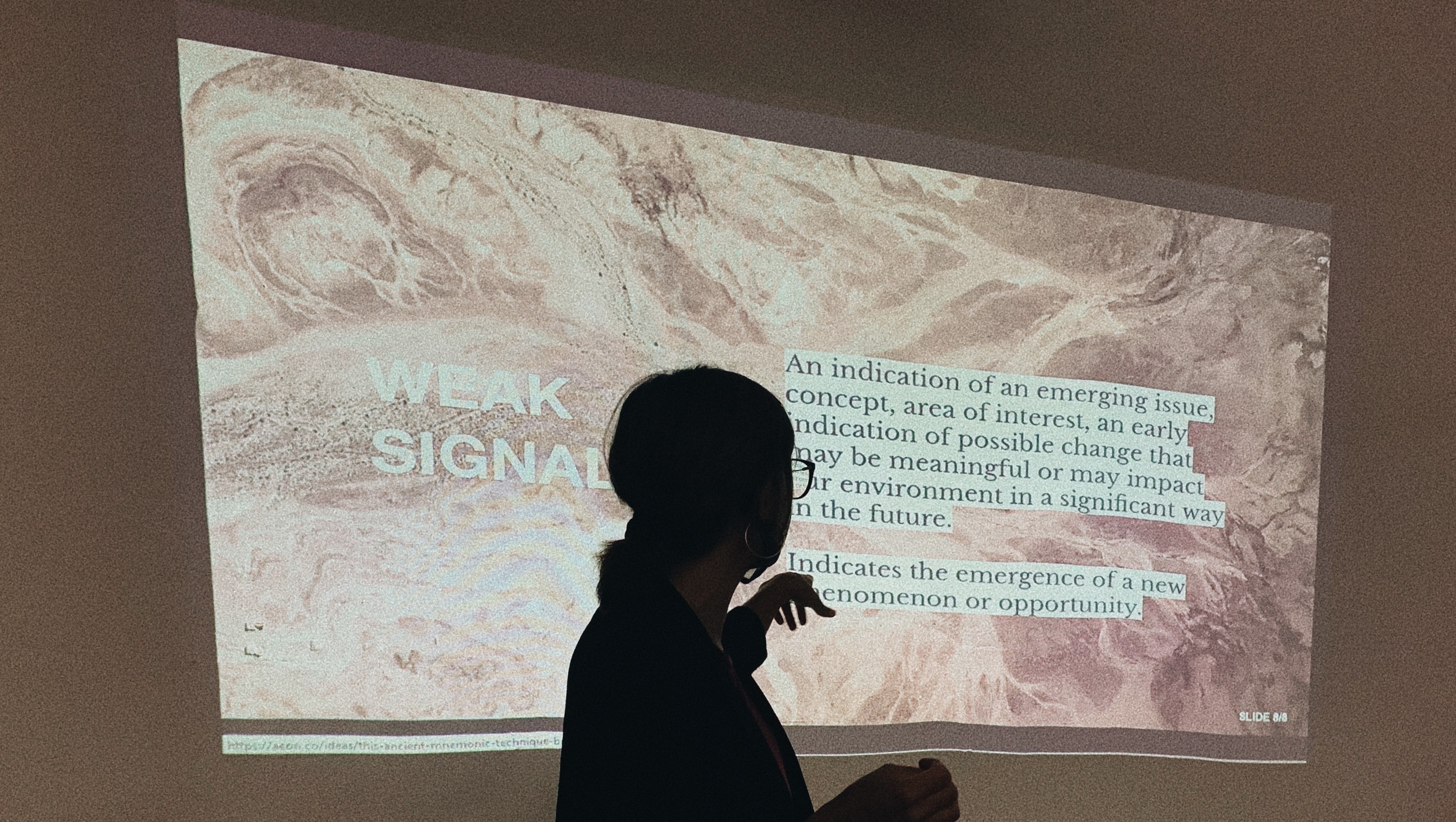TERM I
Atlas of Weak Signals
“The universe will always be much richer than our ability to understand it.”
- Carl Sagan
Theory of Relativity is known to be science’s biggest contribution to how we understand the world today. The first delineation was published in 1905 and called Special Relativity. This theory determined that the laws of physics are the same for all non-accelerating objects, and the speed of light within a vacuum is the same all across the known universe, no matter the speed at which an object travels. This theory helped humanity in understanding things and phenomenons about our world in a much better perspective than before. But there still existed many inexplicable things in the universe that had no evident explanations. The theory could not explain the bending of light around black holes or varying intensities of gravity across other planets in our very own solar system.
In words by the famous physicist Max Planck, “In no case can we rest assured that what is absolute in science today will remain absolute for all time.” The inexplicable element that was missing from the entire equation was recognized ten years later in 1915 when the second rework was published by Albert Einstein called General Relativity. This tinkering was always lying right in front of mostly all the scientific discoveries, the third dimension, Gravity. It helped physicists in learning that space isn't a flat, unchanging, absolute entity. Rather it's woven together, along with time, into a single fabric, called spacetime. This fabric is continuous, smooth, and gets curved and deformed by the presence of matter and energy. Adding this hypothesis revealed several peculiarities about nature that nobody, no matter how imaginative, could ever have imagined.
This ultimate search for human truth didn’t only break and reiterate dynamics but also influenced many existing scientific theories. This could happen only until someone dared to question. As they say, “Knowledge consists in the search for truth, not the search for certainty.” Constant questioning can sometimes make multiple facets of the same truth come to surface and lead to unforeseen discoveries. The outstanding part about this saga was the non-linearity of it all. This nonlinearity is very coherent to the design process that is being implemented in the ‘Design for Emergent Futures’ program at Elisava and IaaC.
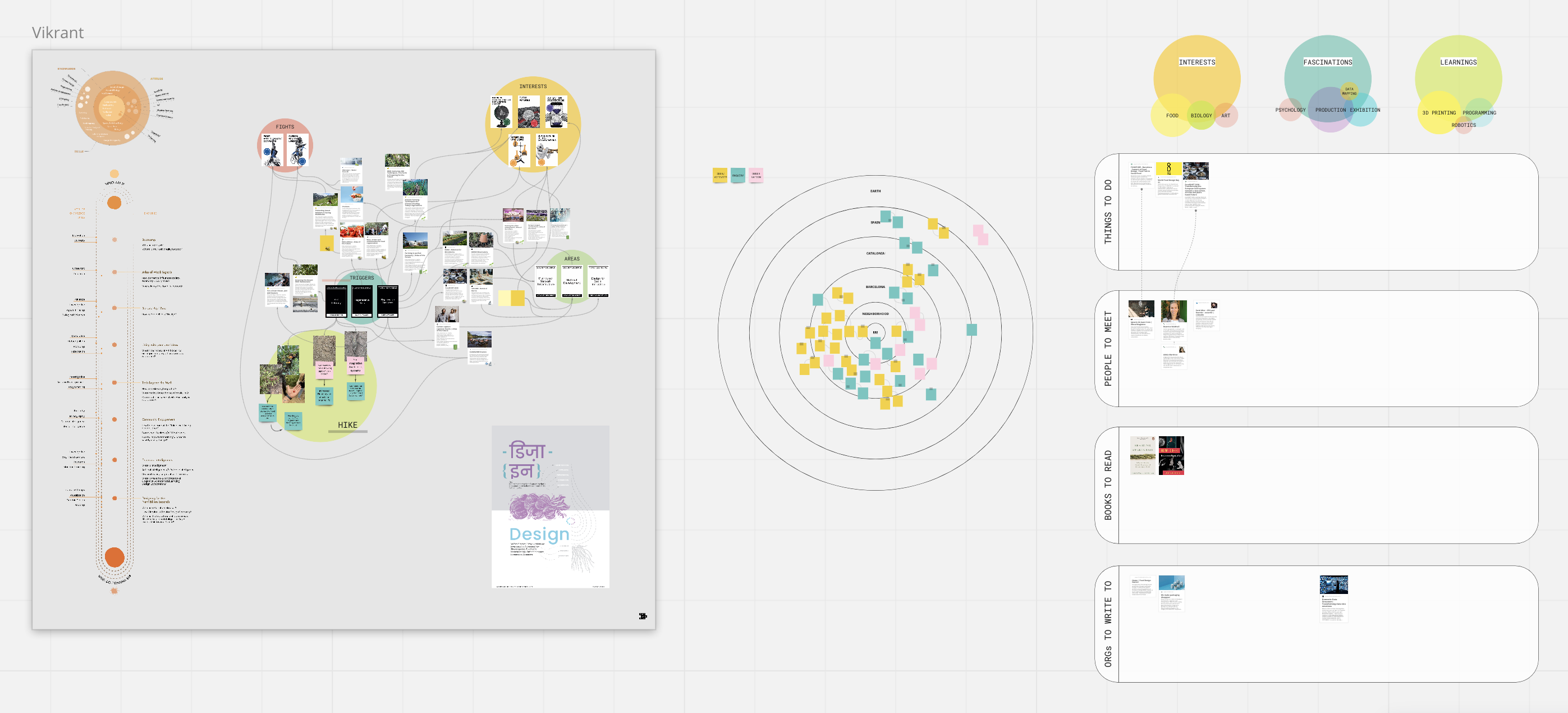
Fig. 2.1 Design Space
Through the first few days of Atlas of Weak Signals, there lived an internal unresolved conflict that was constantly making me question ‘my fight’. Being an interdisciplinary designer, it's pretty common to have multiple fights to cater to. Many times, it gets very conflicting because of the conditioning we’ve received as designers in the education system. What I was reminded through the module was that Design is always supposed to be a non-linear and iterative process. Most discoveries had to fail multiple times before they succeeded. The truth lies in discovering it by doing, so one has to start at some point. This learning helped me in making an informed decision about choosing my weak signals. My first two cards were ‘Fighting Anthropocene Conflicts’ and ‘Carbon Neutral Lifestyle’. These cards cater very broadly to my fight which is about using Food as a medium to resolve bigger problems in our world.
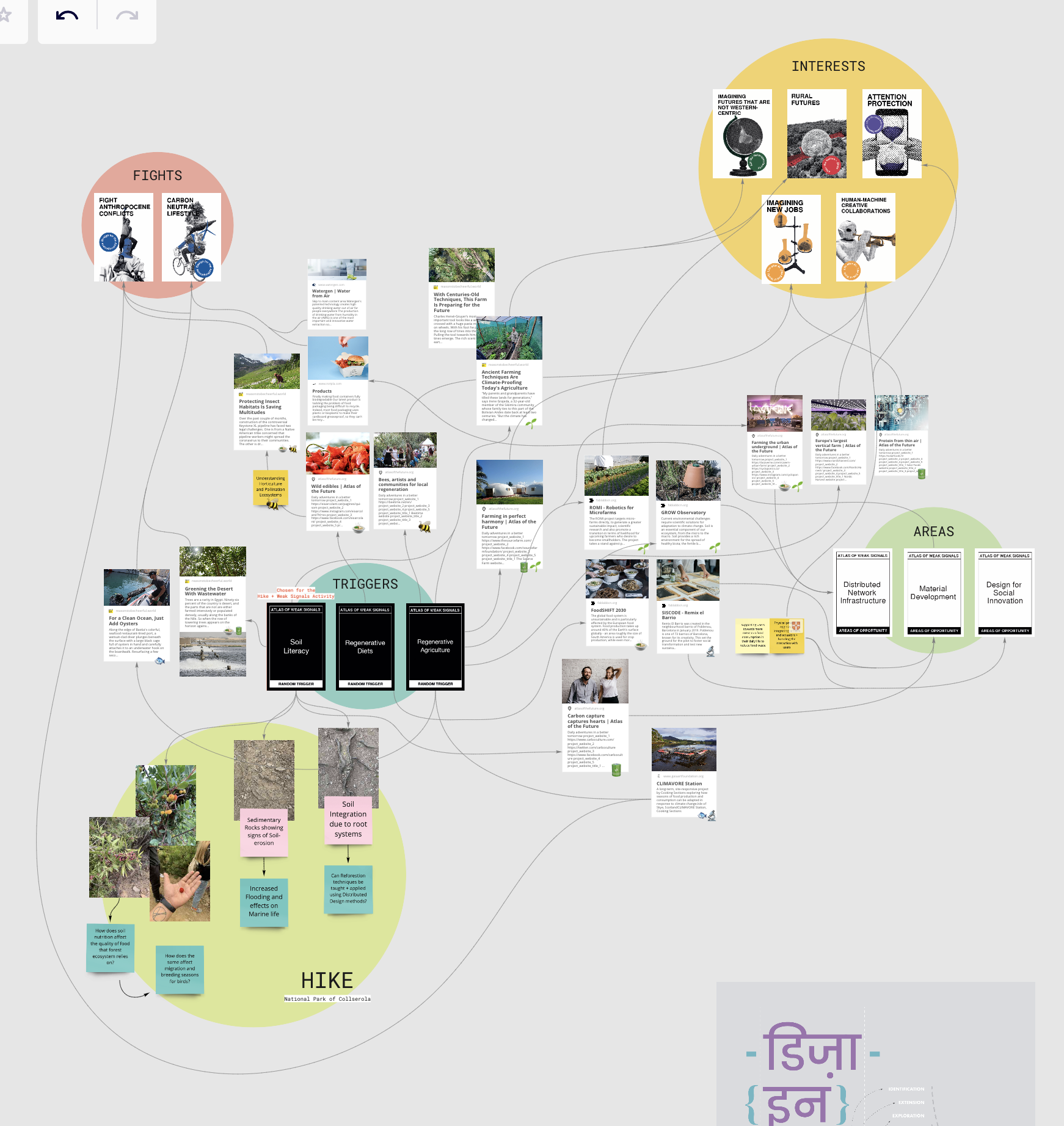
Fig. 2.2 Cross-pollination
Material has always been the humbling agent in my journey as a designer. This led me to choosing ‘Soil Literacy’, ‘Regenerative Agriculture’ and ‘Regenerative Diets’ as my trigger cards.
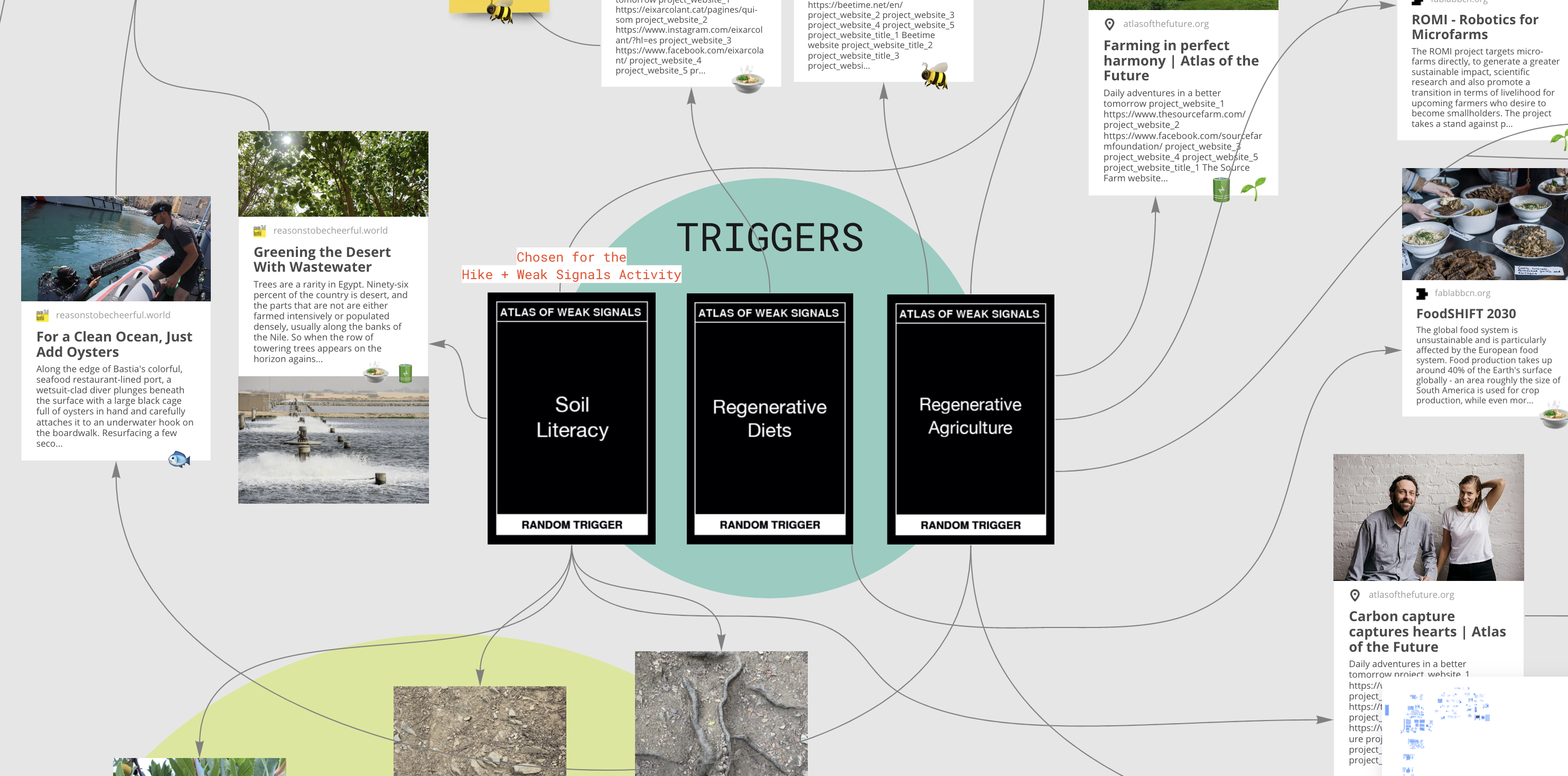
Fig. 2.3 Trigger Cards
A very important agent in designing with the 2020 context is the importance of ‘xarxa’. My second learning taught me how community indeed is an extremely integral part of a Regenerative Design model. These agents of change can really help one and me as a designer in exposing myself to various facets of information, perspectives and approaches that I would have never commenced on. Forming these links between my fights, interests and the community that I live in has inspired and excited me to do more, learn more and unlearn more.

Fig. 2.4 Interests
Designing in a situated process helped me in accumulating resources, connections and examples that were relevant to the geographical and socio-political context of Barcelona. The process acknowledges the critical and real possibilities to any approach whatsoever. The tangible and intangible components of this process helped me in situating my observations, enquiries and ideas in a very practical approach. The transition of moving away from designing objects to designing socio-political-material assemblies is something that I’m feeling deeply passionate about, no matter where my interests lie at the end of the year.
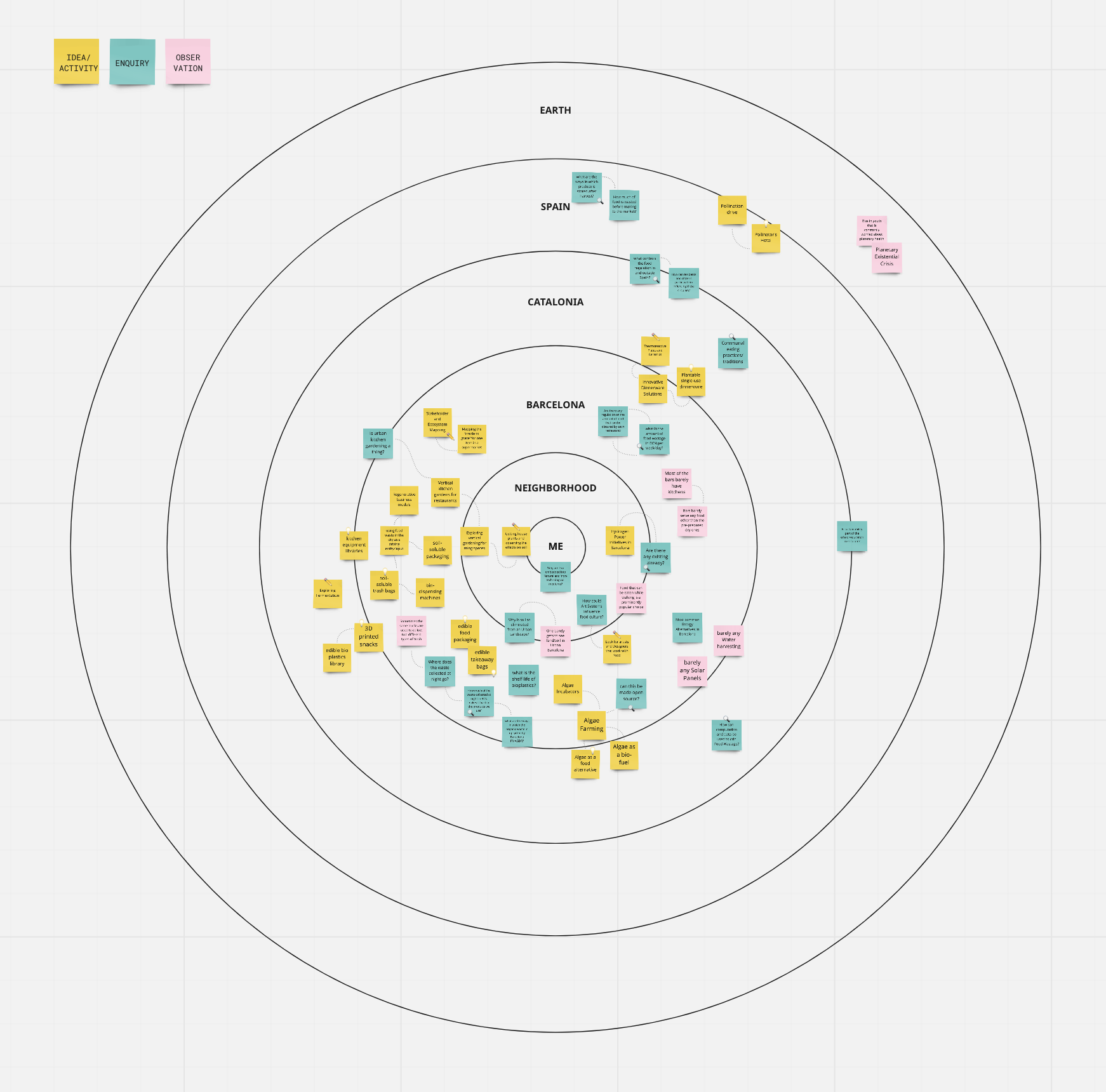
Fig. 2.5 Multi-scalar Diagram
It took only a few moments of familiarising and active conversations to get to the point where ‘Solarpunk’ could find points of resonance. As challenging it was to find links through our ideas and positionality initially, the task turned into an opportunity to realise that sometimes same or similar design goals could be achieved through multiple discourses and approaches. This was made evident when Chris set these words in stone during one of the AoWS classes, “Designing does not happen in vacuum.”
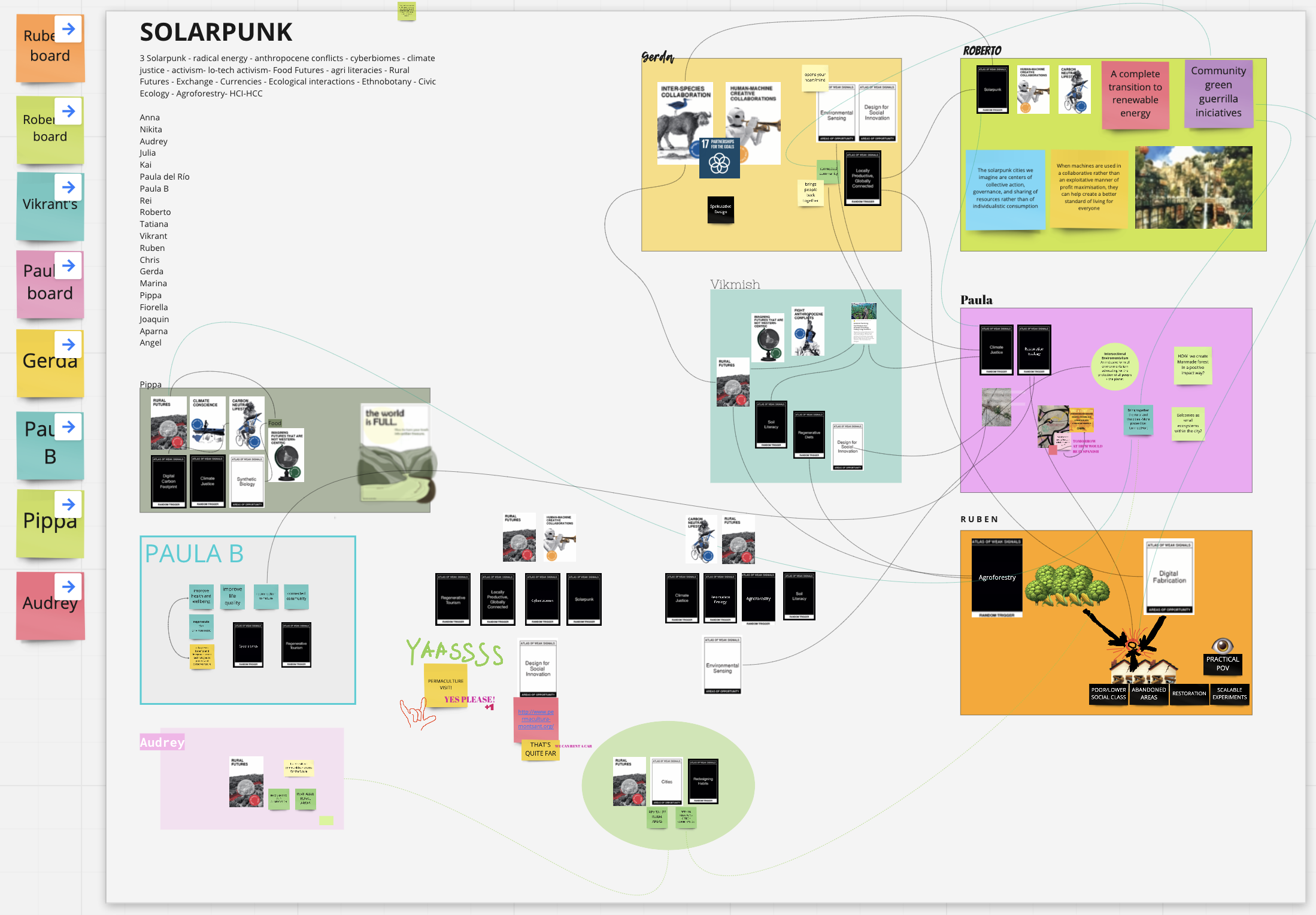
Fig. 2.6 Collaborative Design Space
Based on the productive and reflective journey through AoWS that is only going to continue, I have devised a section of my underlying interests and the relevant resources on the Miro board. The section is inclusive of ‘things to do’, ‘people to meet’, ‘books to read’ and ‘organisations to write to’. You can find a detailed list of this information on the Collaborative Miro board, but following are my upcoming leads:
Someone I’m meeting
Ignacio de Juan-Creix, Founder and Director of Foodture Barcelona for volunteering at the Foodture 2021 event.
An experiment I’ll make
Inspired by one of my trigger cards ‘Soil Literacy’,
I’m experimenting this week to see how certain house plants affect the chemical composition of a contaminated soil.
A new skill I’d explore
I’m planning on exploring Ceramics and
Glass-blowing this week at the Barcelona Design Week.
